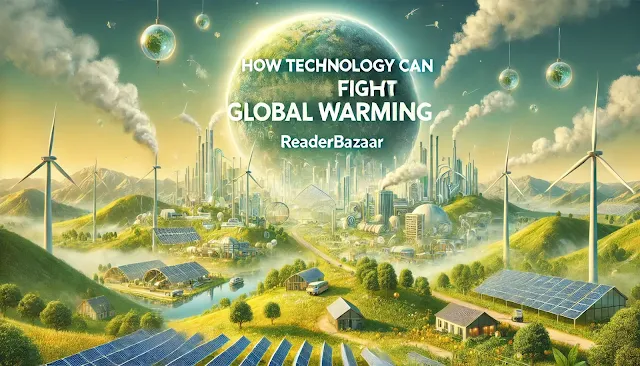AI-Powered Climate Change Solutions
Introduction
Global warming is one of the most pressing issues of our time, threatening ecosystems, economies, and human life. But technology holds the potential to combat this crisis. Innovative solutions are transforming how we approach energy consumption, reduce carbon footprints, and mitigate the effects of climate change. In this post, we’ll explore how technology is helping in the fight against global warming.
Table of Contents
- Introduction
- Pros of Technology in Fighting Global Warming
- Cons of Technology in Fighting Global Warming
- The Relationship Between Technology and Climate Change
- Differences Between Traditional and Technological Solutions
- Examples and Case Studies
- Comparative Analysis: Technology vs Traditional Approaches
- Frequently Asked Questions (FAQs)
- Call-to-Action (CTA)
- Conclusion
- References
Pros of Technology in Fighting Global Warming
- Renewable Energy: Solar, wind, and hydropower technologies reduce reliance on fossil fuels.
- Smart Grids: Efficient energy distribution, reducing wastage and carbon emissions.
- Electric Vehicles (EVs): Reduced greenhouse gas emissions compared to conventional vehicles.
Cons of Technology in Fighting Global Warming
- Cost: Initial investment in renewable technology can be high.
- Resource Demand: Mining for raw materials like lithium for batteries has environmental impacts.
- Technological Inequality: Developing countries may struggle to implement advanced tech solutions.
The Relationship Between Technology and Climate Change
Technology has both contributed to global warming and offers solutions to combat it. The industrial revolution, powered by fossil fuels, spurred global temperature rise. However, technological advancements now provide ways to reduce emissions, transition to green energy, and monitor environmental health more efficiently.
Differences Between Traditional and Technological Solutions
- Traditional Solutions: Planting trees, reducing waste, or recycling—effective but slower.
- Technological Solutions: Advanced carbon capture systems, AI-driven climate monitoring, and renewable energy sources—faster and more scalable.
Examples and Case Studies
- Tesla’s Contribution to Clean Energy: Tesla’s EVs and solar energy solutions are making clean energy accessible globally.
- Smart Cities: Cities like Copenhagen are leading the way in using technology to reduce emissions and create sustainable urban environments.
Comparative Analysis: Technology vs Traditional Approaches
| Aspect | Traditional Solutions | Technological Solutions |
|---|---|---|
| Speed of Implementation | Slow | Fast |
| Scalability | Limited | High |
| Cost | Low | Initially high, but drops over time |
| Environmental Impact | Positive | Mixed (depends on resource use) |
Frequently Asked Questions (FAQs)
Q1: Can technology completely stop global warming?
A: Technology can significantly reduce its effects, but global efforts must include both technology and lifestyle changes.
Q2: Are renewable energy solutions affordable for the average consumer?
A: While initial costs can be high, renewable energy has become more affordable over time and often leads to savings in the long run.
Call-to-Action (CTA)
Now is the time to act. Whether you're a business owner, policymaker, or an individual, adopting sustainable technologies is crucial for the fight against global warming. Visit ReaderBazaar for more insights on how technology is shaping a greener future.
Internal and External Links
- Internal: ReaderBazaar Technology Articles
- External: UN Climate Change Solutions
Conclusion
Technology is undeniably a powerful tool in the fight against global warming. From renewable energy to electric vehicles, we have the means to make a significant impact. However, we must ensure that technological solutions are implemented thoughtfully, considering both their environmental and social effects.




0 Comments